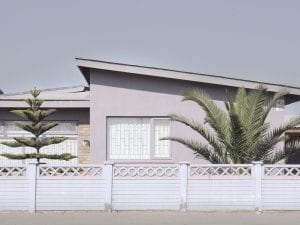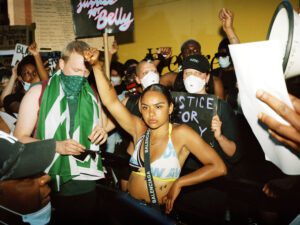American photographer Peter Hujar (1934-1987) started out in the 1950s as an assistant to commercial photographers but soon became a part of the group of underground artists, poets and musicians who formed the downtown New York art scene of the 1970s and 1980s, and a regular of the creative circles who gravitated around Andy Warhol’s The Factory.
Peter Hujar: Speed of Life, presented by the Hague Museum of Photography in cooperation with the Morgan Library & Museum in New York and Fundación MAPFRE in Madrid, includes over 100 vintage photographs made by Hujar between the mid-1950s and his death. His work is often compared to that of his contemporary Robert Mapplethorpe, with Nan Goldin stating that he deserves a similar level of recognition. Hujar’s images, characteristically black and white portraits, are notable for the contrast between their meticulous composition and the flamboyant characters who people them, including transgender individuals such as Candy Darling, immortalised in Lou Reed’s Walk On The Wild Side.
One of the photographer’s most famous images is of Darling on her deathbed (she died from lymphoma, aged 29). Sexuality and death were topics that were fearlessly embraced throughout his career. As an openly gay man, these themes would only deepen as the AIDS pandemic hit the New York gay community, claiming many friends and eventually the photographer himself, aged 53. The themes reflected are echoed by the title of his only book, Portraits in Life and Death (1976), for which Susan Sontag wrote the introduction. Hujar focused on character, experience and the mental state of his subjects, who were encountered in intimate settings.
Whilst his contemporary Mapplethorpe had a sharp commercial instinct, many witnesses describe Hujar as a difficult man, and critic and friend Vince Aletti reported that “he could never sell himself.” However, in spite of his resistance to the commercial world and his regular quarrels with galleries, Hujar spent his life fighting for wider public recognition of his art. Establishing relationships with his subjects was part of Hujar’s success, and owing to this strength the interaction between sitter and photographer was profoundly intimate. He believed it was the portraitist’s task to elicit the sitter’s singularity. His subjects are extraordinary and eye-catching characters with whom he felt a personal affinity. “My work comes out of my life. The people I photograph are not freaks or curiosities to me. I like people who dare … I photograph those who push themselves to any extreme – that´s what interests me – and people who cling to the freedom to be themselves.” Apart from making portraits of neighbours and friends, Hujar pursued both nature and landscape photography as well. After leaving The Hague, Peter Hujar – Speed of Life will move on to the city which inspired the work, with a show at The Morgan Library & Museum in New York from January to late May 2018.
Peter Hujar: Speed of Life runs until 15 October at Fotomuseum den Haag. For more information: www.fotomuseumdenhaag.nl
Credits:
1.Peter Hujar, St. Patrick’s Kathedraal, Paaszondag / St Patrick’s, Easter Sunday, 1976. Gelatin silver print, The Morgan Library & Museum, The Peter Hujar Collection. Acquired thanks to The Charina Endowment Fund, 2013. 108:1.92. © The Peter Hujar Archive, LLC. Courtesy Pace/MacGill Gallery, New York en Fraenkel Gallery, San Francisco.





